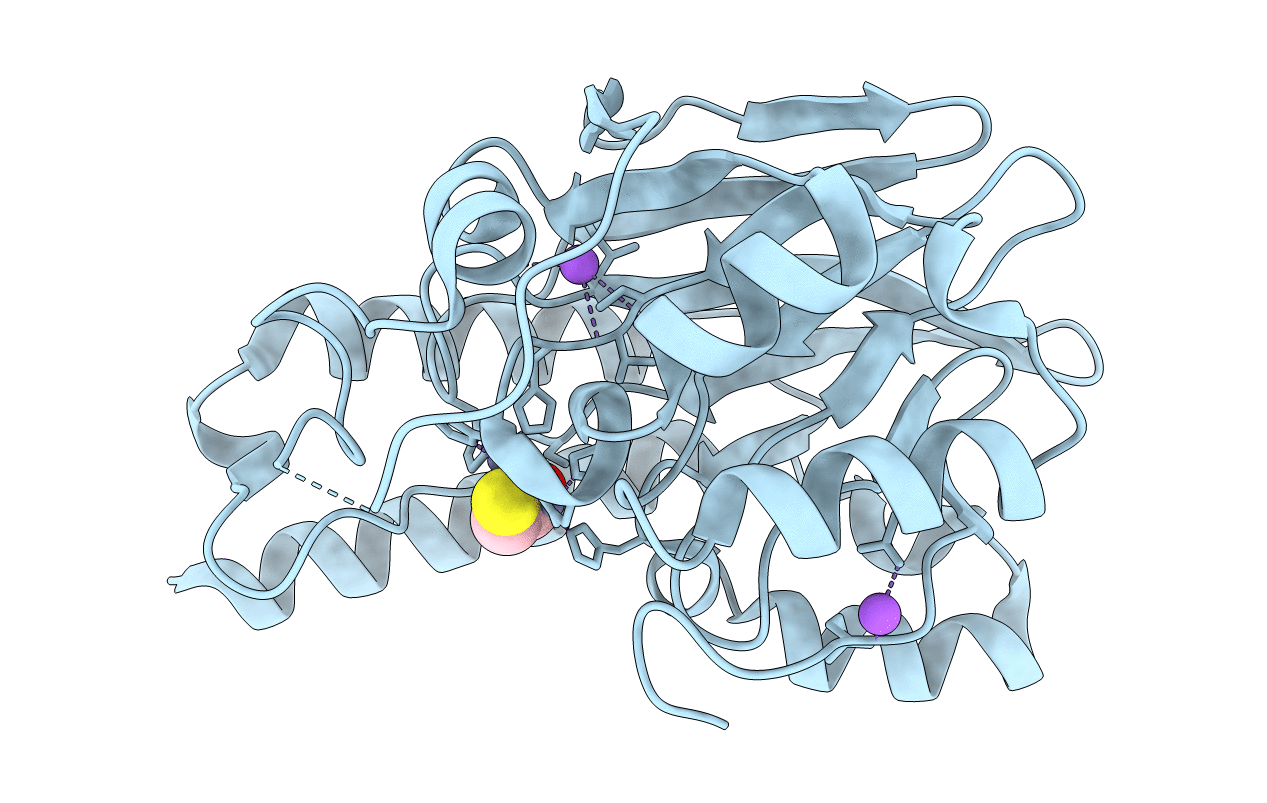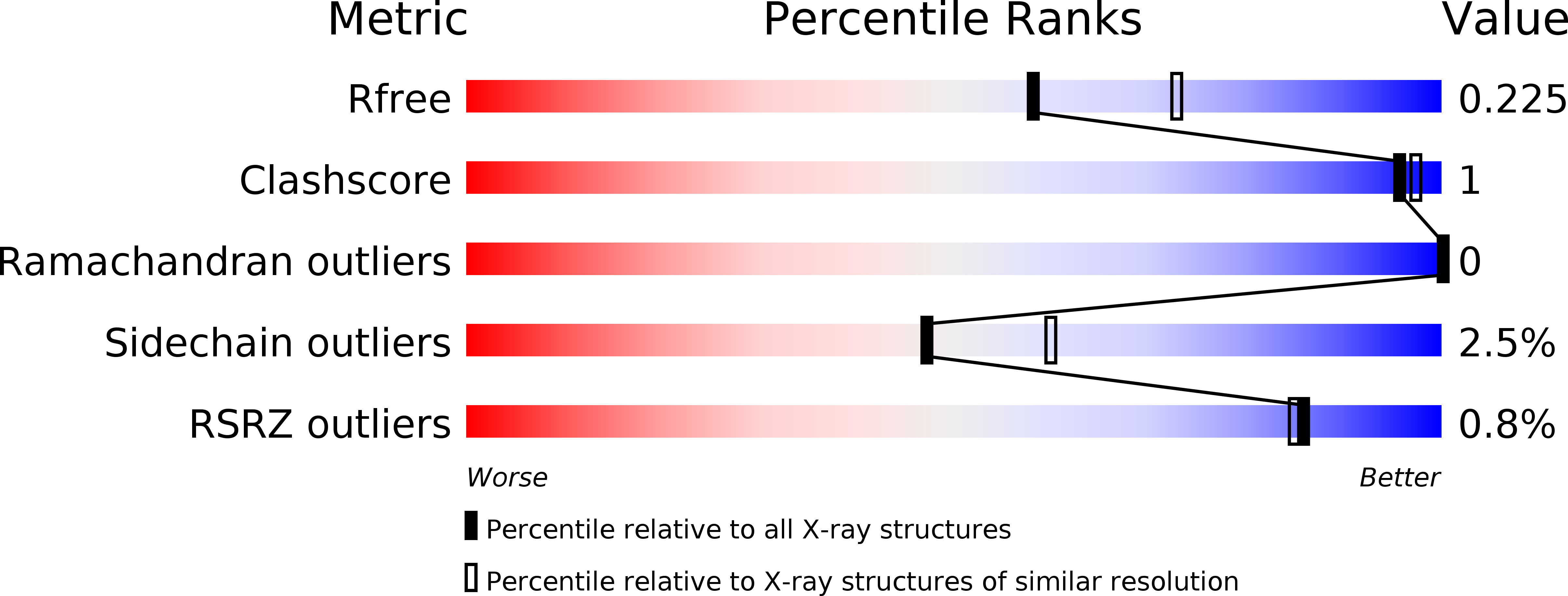
Deposition Date
2012-04-02
Release Date
2013-02-13
Last Version Date
2024-11-06
Entry Detail
PDB ID:
3VQZ
Keywords:
Title:
Crystal structure of metallo-beta-lactamase, SMB-1, in a complex with mercaptoacetic acid
Biological Source:
Source Organism:
Serratia marcescens (Taxon ID: 615)
Host Organism:
Method Details:
Experimental Method:
Resolution:
2.20 Å
R-Value Free:
0.22
R-Value Work:
0.16
R-Value Observed:
0.17
Space Group:
P 31


